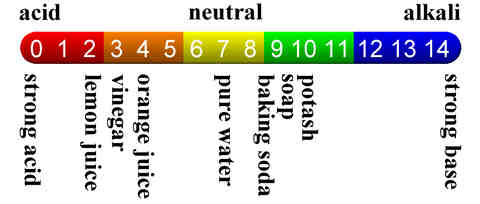Aeroponic Nutrient Solution – The Water
Water is not just water. Have you ever traveled to different locations on vacation and noticed how the taste and even the feel of the water varies.
I was fortunate to have a short stay at Mt. Shasta in California. I was amazed how well the water tasted. It was sweet. And when I bathed for the night, how good if felt on my body, nice and soft. Oh not to mention how well the soap suds during the shampooing of my hair. I did not know water could be so good right out of the faucet. I was loving it and missed it ever since.
[sc:AD2]Plants are just like us when it comes to water, most water they hate and some they love. Why is that? What kind of water do plants love and can thrive in?
The Good News
An indoor aeroponic system uses way less water and nutrients because the plant roots are sprayed in intervals at set periods using a precise spray mist of droplets that can be utilized most efficiently by osmosis to nourish the plant. Very little excess nutrient solution is lost to evaporation or runoff.
Plant disease is minimized because the roots are left open to air, avoiding soaking in a stagnant moist medium and the root chamber can be kept sterile.
Plants hate hard water. Why?
 Hard water has high levels of calcium carbonate which is dissolved in it. Ground water like well water is very hard and mostly comes from dissolved limestone. You can’t remove calcium by using a filter.
Hard water has high levels of calcium carbonate which is dissolved in it. Ground water like well water is very hard and mostly comes from dissolved limestone. You can’t remove calcium by using a filter.
Plant roots take up nutrients by osmosis. The root membrane allows nutrients to pass through to reach the plant. Calcium is a nutrient that plants metabolize, just as salt is a nutrient humans use.
However, if we drink salt water to quench our thirst, we get more thirsty. The only way for us to get rid of the excess salt is to flush it out with water. But drinking more salt water just makes us more dehydrated and thirstier.
This is a rough analogy of basically the problem plants have growing in hard water. So even though the nutrients that the plant needs might be in the hard water it can’t get enough. For each sip of water the plant needs, it gets too much of what it does not want and has a hard time getting rid of it. This puts stress on the plant and it will not grow well.
So even though the nutrients that the plant needs might be in the hard water it can’t get enough. For each sip of water the plant needs, it gets too much of what it does not want and has a hard time getting rid of it.
Plants need the right concentration (PPM)
 As we mentioned earlier plants take up nutrient by osmosis, for each type of plants, there’s a limit to the total dissolved concentration of all the minerals it can handle.
As we mentioned earlier plants take up nutrient by osmosis, for each type of plants, there’s a limit to the total dissolved concentration of all the minerals it can handle.
There are different methods to measure the dissolved nutrients in the solution or concentration. The most common way is to measure the electrical conductivity, or EC with a meter.
For example, lettuce grows best with an EC of about 1.6. Remember this is the concentration of minerals in the water, whether good or bad stuff. Let’s say the EC of your tap water before adding any nutrients is 0.3. So if you make up a nutrient solution for your aeroponic system to an EC of 1.6, nearly 19% of the things dissolved in the water is things the plant does not want. (0.3 divided by 1.6 equals 19%)
Electrical Conductivity or EC is the concentration of minerals in the water, whether bad or good minerals.
Aeroponic Nutrient Solution – The Right pH
 Hard water tends to have a high pH for most plants to grow well with. Most plants take up nutrients best when the pH is slightly acidic. Neutral pH, not acidic or basic, is 7.0. However most plants like a mild acidic pH of about 6.0. You need to know that pH is a logarithmic scale and not linear. A move from 7.0 to 6.0 is about ten times more acidic. Most hard water has a pH above 8.0, which is not ideal for plants.
Hard water tends to have a high pH for most plants to grow well with. Most plants take up nutrients best when the pH is slightly acidic. Neutral pH, not acidic or basic, is 7.0. However most plants like a mild acidic pH of about 6.0. You need to know that pH is a logarithmic scale and not linear. A move from 7.0 to 6.0 is about ten times more acidic. Most hard water has a pH above 8.0, which is not ideal for plants.
Most aeroponic and hydroponic nutrients purchased will lower the pH by themselves. These nutrients assume you are starting with water that’s neutral, a pH of 7.0. So if your water is neutral, and you add these nutrients, your final solution will be down to 6.0 pH. Bingo! Which is what we want for most plants.
Roots use the Ions in water
Complicating the formula more, roots use nutrients as ions in water; positively charged cations, or negatively charged anions. An example of a cation is ammonium, NH4+, and an anion nitrate, NO3- , both important nitrogen sources for plants. As plants use the ions, the pH of the solution can change, meaning it can lean too far positive or too far negative. The optimal pH for plant growth is between 5.8 and 6.3.
In aeroponics systems where water and nutrients are recycled, it is important to measure the acid/base or pH measurement to allow plants to absorb nutrients. Aeroponic systems using spray to nourish the roots use much less liquid resulting in easier management of nutrient concentration with greater pH stability.
Finding pH 7.0
If the starting water is not neutral pH, you can purchase a pH kit to adjust it by adding base or acid until the nutrient solution is between 6.0 to 6.5 range. This might take some fiddling around but is the way to go for healthy plant growth.
Rain water is generally close to the ideal neutral pH of 7.0 and the most natural and cheapest way to go. However, depending on where you live air pollution, birds, and dust all could affect the quality of the water. So if you’re living in the middle of Los Angeles, think twice before using rain water.
If you don’t have access to rain water or your tap water is poor, you can use distilled water. You can either purchase it from your local store or buy a distiller. The process is quite easy. When you convert water into water vapor or steam, the calcium carbonate is left behind along with other imparities. What you get after the vapor condenses is just plain old H2O, water with a pH of 7.0.
Another process to make good water is by reverse-osmosis, RO. These system produce good water by wasting some water. These systems can be installed in most kitchens but require monthly maintenance. If neglected, it will produce bad water, and most have high concentrations of nitrogen.
By the way, the garden lingo for nutrients is nutes. So if you are ask what kind of nutes you want, they are not asking to sell you nuke bombs.
Nutrient parts
Nutes come in different packaging styles: one-part, two-part and three-part. The one-part nutes could come in liquid or dry forms.
One of the oldest and still the best nutrients are the three-part Flora The. bottles of concentration come in three ways: Micro, Grow and bloom. With this system, you mix up the nutrients by adding the concentrations to water in different proportions based on the life stage of the plant’s growth.
You might be thinking why not just mix the three bottle together into one and make it easier to deal with. There’s a problem with this.
If the nutrients are not added to the water in the right order, they will react with each other in a bad way. The nutrient mix could become nutrient lockout. The result is a mixture that wouldn’t be usable for plant growth.
So when making these multi-part nutes, add the concentrations to the water in the right amount and order.
The nutrients in Aeroponic Plant Food for Vegetables
Carbon, hydrogen, and oxygen are present in air and water. Water may contain a variety of elements according to your local treatment plant additions and should be factored into your final conductivity factor. Rain water should have an EC of 0.0.
Primary nutrients are nitrogen, phosphorus, and potassium and are used by plants in different amounts according to the growth stage. Secondary nutrients are calcium, magnesium, and sulfur, and micro-nutrients are iron, zinc, molybdenum, manganese, boron, copper, cobalt, and chlorine.
Conclusion
In conclusion, the pH and the EC should be monitored for optimal plant growth. These will change as the nutrient solution is being used, and as it ages. So check the nutrient weekly and make changes for the type of plant growing in your aeroponic system. Your pH should stay in the 5.5 to 6.5 range. Use rain or distilled water with a neutral pH of 7.0.

